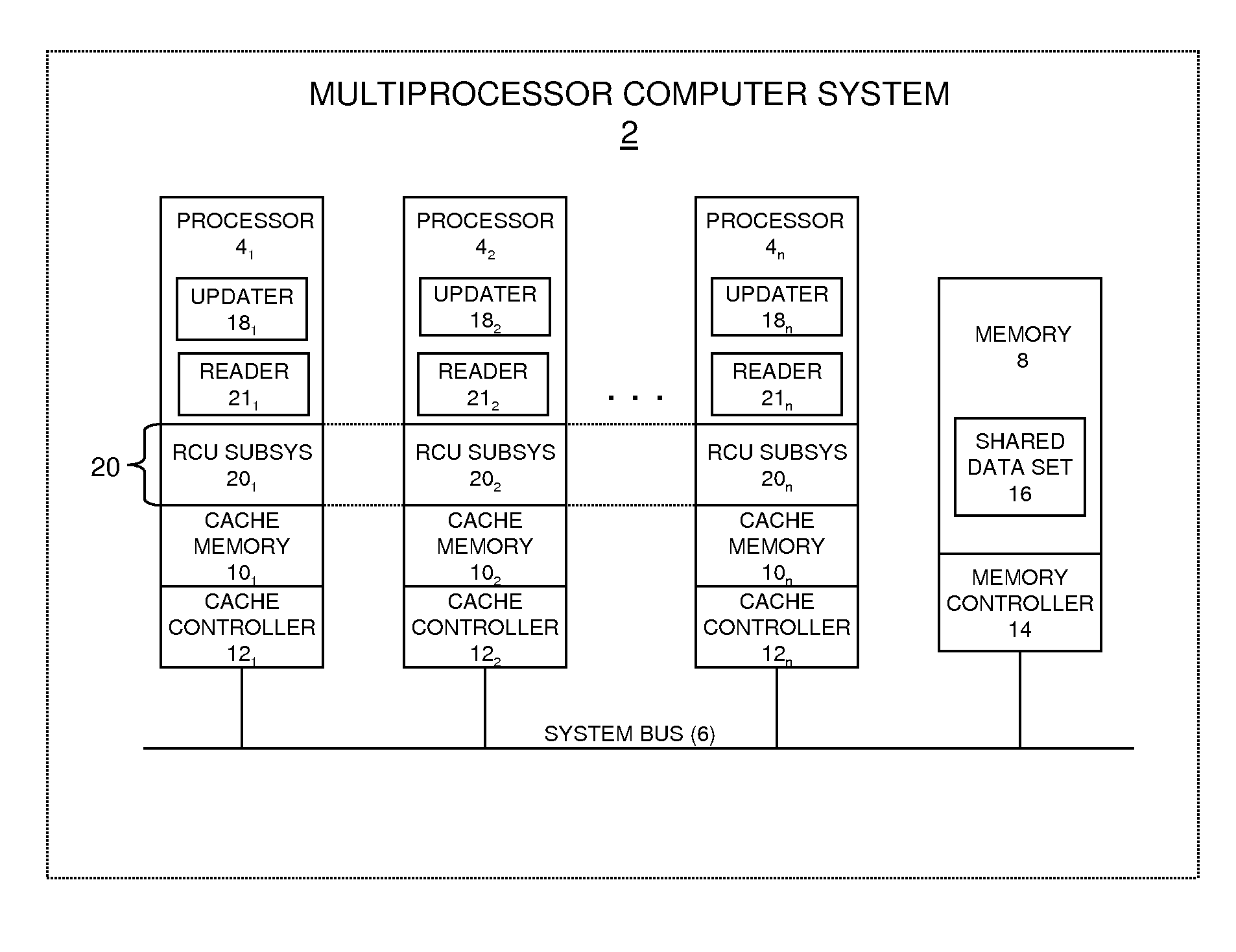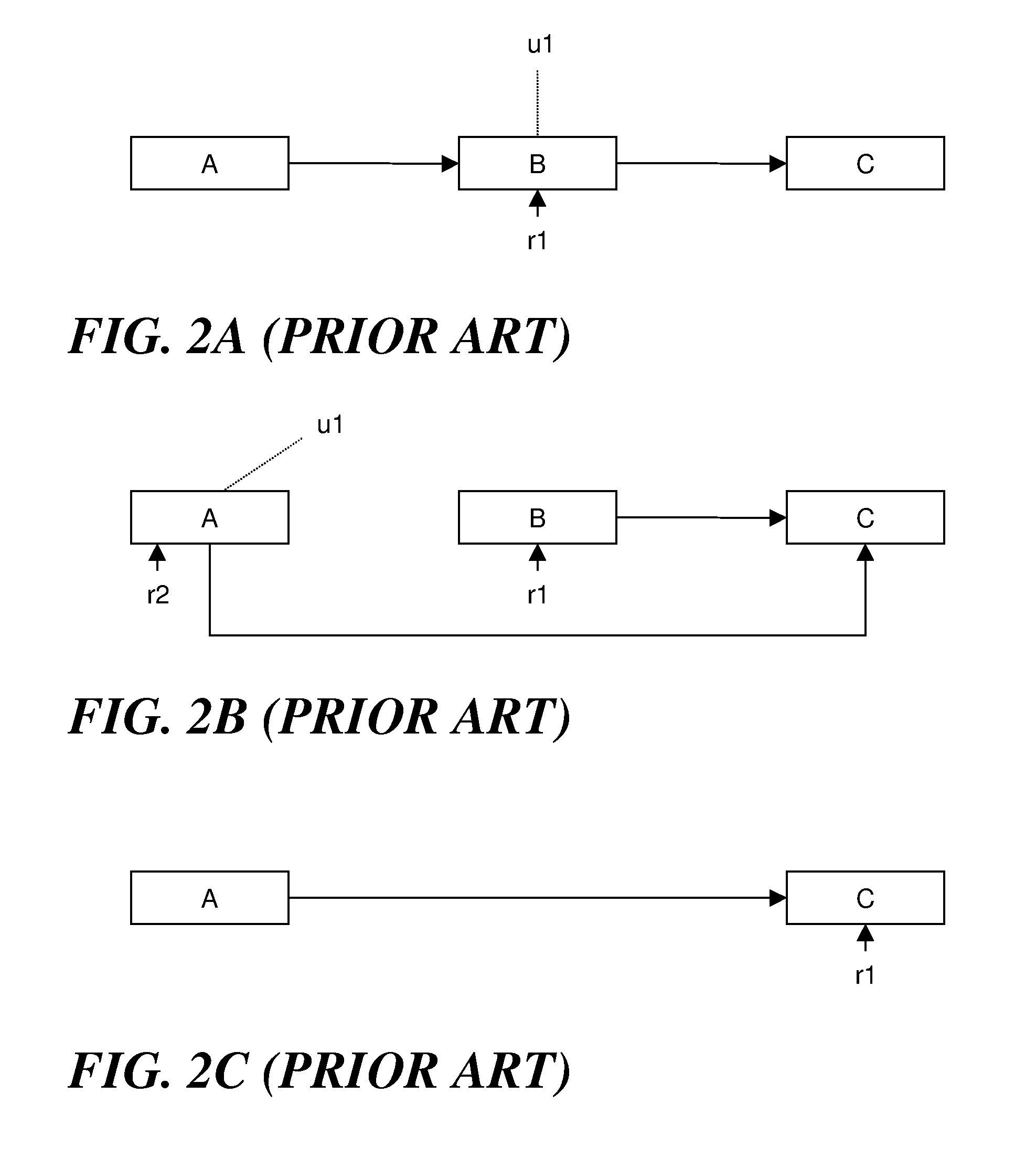High Performance Real-Time Read-Copy Update
- Summary
- Abstract
- Description
- Claims
- Application Information
AI Technical Summary
Benefits of technology
Problems solved by technology
Method used
Image
Examples
Embodiment Construction
[0034]Turning now to the figures, wherein like reference numerals represent like elements in all of the several views, FIG. 4 illustrates an example computing environment in which the disclosed embodiments may be implemented. In particular, a multiprocessor computing system 2 is shown in which two or more processors 4 (e.g., 41, 42 . . . 4n) are connected by way of a system bus 6 to a memory 8. As used herein, “processors” refers to CPUs (Central Processing Units) within single-core or multi-core (each core being considered a CPU) processing devices that execute program instruction logic, such as software or firmware. Such processing devices may be used in general purpose computers, special purpose computers, portable computing, communication and / or media player devices, set-top devices, embedded systems, to name but a few. The memory 8 may comprise any type of storage medium capable of storing data in computer readable form. The processors 4 and the memory 8 may be situated within ...
PUM
 Login to View More
Login to View More Abstract
Description
Claims
Application Information
 Login to View More
Login to View More - R&D Engineer
- R&D Manager
- IP Professional
- Industry Leading Data Capabilities
- Powerful AI technology
- Patent DNA Extraction
Browse by: Latest US Patents, China's latest patents, Technical Efficacy Thesaurus, Application Domain, Technology Topic, Popular Technical Reports.
© 2024 PatSnap. All rights reserved.Legal|Privacy policy|Modern Slavery Act Transparency Statement|Sitemap|About US| Contact US: help@patsnap.com










